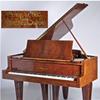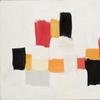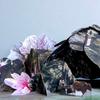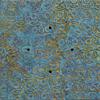Green Art Gallery Dubai opens "Connecting Heavens", a group exhibition featuring exciting new talent from Lebanon
- DUBAI, United Arab Emirates
- /
- May 02, 2010
Opening Reception: Saturday 8th May 2010, 7:30 pm onwards
Exhibition Dates: 8/05/2010 - 15/06/2010
Green Art Gallery is pleased to announce the opening of “Connecting Heavens”, a group exhibition featuring works by some of the most exciting artists working in Lebanon today. The show presents new works by Ayman Baalbaki, Oussama Baalbaki, Tagreed Darghouth, Shawki Youssef, Rafic Majzoub, Abdel Rahman Katanani and Chaza Charafeddine.
Born in 1975 in the South of Lebanon, Ayman Baalbaki’s practice reflects the realities of the Lebanese Civil war which he has lived through. Having been forced to leave his village and relocate to Beirut to the neighborhood of Wadi Abu Jamil, which has been replaced with the glitzy Downtown area, his background has greatly influenced his work. His paintings reflect the aspects of his life as a refugee in Beirut and the reconstruction efforts in the post-war era (or the de-construction for that matter). After completing a degree at the Lebanese University’s Institute of Fine Arts, Baalbaki left for Paris where he continued his studies at the Ecole Nationale Superieure des Arts Decoratifs and obtained his PHD. He has exhibited widely in the Middle East and Europe; recent solo shows include “Switzerland It Ain’t" ("Ceci N’est Pas La Suisse") at Rose Issa Projects, London (2009); “Apocalyptic Transfiguration”, at the Agial Art Gallery, Beirut (2008); “Ici est Ailleurs”, Agial Gallery, Beirut, Lebanon (2006); “Thirty: Ayman Baalbaki and Sheelagh Colcough”, Studio 4-11, Belfast (2005); “CM3”, Cité Internationale Universitaire, Paris (2003); and “Contemporary Art Encounter: Imagining the Book”, Bibliotheca Alexandrina, Egypt (2002). Upcoming exhibitions include a solo show at the Luce Gallery in Turin, entitled “Ciel Chargé de Fleurs” and Monica de Cardenas Galleria, Milan.
Another rising star on the Lebanese art scene, Oussama Baalbaki’s paintings explore the emotive effects of inanimate objects. Having been born in 1978, his works also hints at the realities of the Lebanese civil war. For this exhibition, Oussama presents two of his most powerful works. “Don’t Wake the Warrior,” shows the naked upper body of a man whose prone, awkward posture suggests death. The only splash of color in the image, predominantly rendered in shades of gray, is a pale yellow butterfly perched on the unconscious warrior’s flank. Delicately rendered in a pastel hue, the ethereal butterfly is a total contrast to the monumental physicality of the monochrome torso. Another work entitled “An Infernal Carnival,” shows a soldier crouching next to a piece of heavy artillery. The dark sky above is filled with a shower of festive colors like falling confetti or an exploded firework.
Meanwhile, Tagreed Darghouth, presents seven new works, which deal with controversial social issues, in both Lebanon and the Middle East. Six works, which are part of her “Mirror, Mirror” series, are spotlighting both women and men who have gone under plastic surgery, a phenomenon predominant in Lebanon, mainly changing the shape of their Semitic nose, in the search of features that resembles western facial anatomy. One work, entitled “Ceela holding the baby”, is part of her “Fair & Lovely” series whose subject is domestic helpers. The regular sight of an Ethiopian/Sri Lankan/Philippino woman holding a Lebanese baby, feeding him, caressing him, waiting for him to return from school, and even taking him to bed, expose a critical situation to the Lebanese family. An obvious transformation is taking place with the new mother-maid-child relationship, keeping in mind that this “newly maid mom” is not well appreciated for her endeavor. Born in 1979 in Saida, Tagreed studied at the Lebanese University’s Institute of Fine Arts and also continued her studies at the Ecole Nationale Superieure des Arts Decoratifs.
Traditionally trained as a painter, Shawki Youssef (b.1973) began experimenting in various media, before recently returning to painting. In “ Connecting Heavens”, Shawki presents two of his most recent works on canvas in addition to several works on paper. This new body of work deals with the absence rather than the presence of the inter-religious dialogue, a sensitive subject in the region, and express mostly a situation of an eminent danger or fear of the “other”. For Shawki, in the non-dialogue space, acclaiming holy truths might lead to the creation of confronting unities that mirror each other, which leads to clash and fragmentation. His works on paper deal with fragmented bodies or bodies under construction.
Rafic Majzoub’s (b. 1971) paintings are uniquely focused on a personage in perpetual quest for himself. Each trait, each tonality, each drawing and each brushstroke leaves its impact on the impression of a work in progress, leaving it nonetheless open, unfinished and unaccomplished, echoing the essential incapacity of the human being to accomplish in a world of imperfection, fracture and fragmentation. His paintings are raw, sarcastic and tense mainly displaying angular, tortured faces as if they were visual translations of Tom Waits songs.
Abdul-Rahman Katanani (b.1983) is a young Palestinian artist who has lived all his life as a refugee in the Sabra & Shatila camp in Lebanon. As such, his works depict the painful realities of Palestinian refugees in camps, reflecting the often contradictory feelings of suffering and endurance, hopelessness and hopefulness, pain and happiness, along with the nostalgic feelings for a beloved homeland. What makes Abdul-Rahman’s works unique is his utilization of the camp’s structural materials of tin and card boards, rags of old clothes, and old utensils, etc in a quest to further humanize the daily situation in camps.
Born in 1964, Chaza Charafeddine, worked in performance before recently exploring the visual fine arts. Her current body of work, entitled “ Trans-cenders”, is her first series constituting of photographic collages. The work is inspired by the Islamic art of the Mongolian period and by Persian miniatures produced between the 16th and the 18th centuries.She is specifically interested in images produced in the 1940s in Iran, India, Afghanistan, Pakistan, Egypt and Syria, depicting mythological beings such as the buraq* - a creature half human half animal; but also in animals such as the peacock, that symbolize particular virtues like beauty, wisdom and power. The goal is to draw a comparison between the aesthetics of popular imagination and the aesthetics of portrayal of female pop artists, marketed as representing "perfect beauty”.
About Green Art Gallery
Green Art Gallery was founded in 1995 and was amongst the first galleries to exhibit Arab art in Dubai. The Gallery became a primary establishment to nurture the city's earliest art collector base by promoting pioneering artists from across the Middle East and North Africa. In 2009, leveraging its long and rich history in the market, Green Art Gallery also began to represent and showcase contemporary artists from the region. In this manner the Gallery would become one of the few spaces whose knowledge and expertise has spanned the Arab art movement from modernism and will continue to promote the newest tendencies in the regional contemporary art practices.
Green Art Gallery aims to become not only an exhibition space, but also as a supporter and point of reference for the regional trends in modern and contemporary art practices.
Opening Hours
Saturday-Thursday from 10 am until 7 pm. Closed on Fridays
Contact Info
51st Street, Villa # 23, Jumeirah 1 P.O.Box 257 11 Dubai, UAE
T: + 9714 3449 888
F: + 9714 3447 449
For high-res images, artist bios, press enquiries, artist interviews and any further information please contact info@gagallery.com
Contact:
Yasmin AtassiGreen Art Gallery
+971 4 3449 888
info@gagallery.com
















